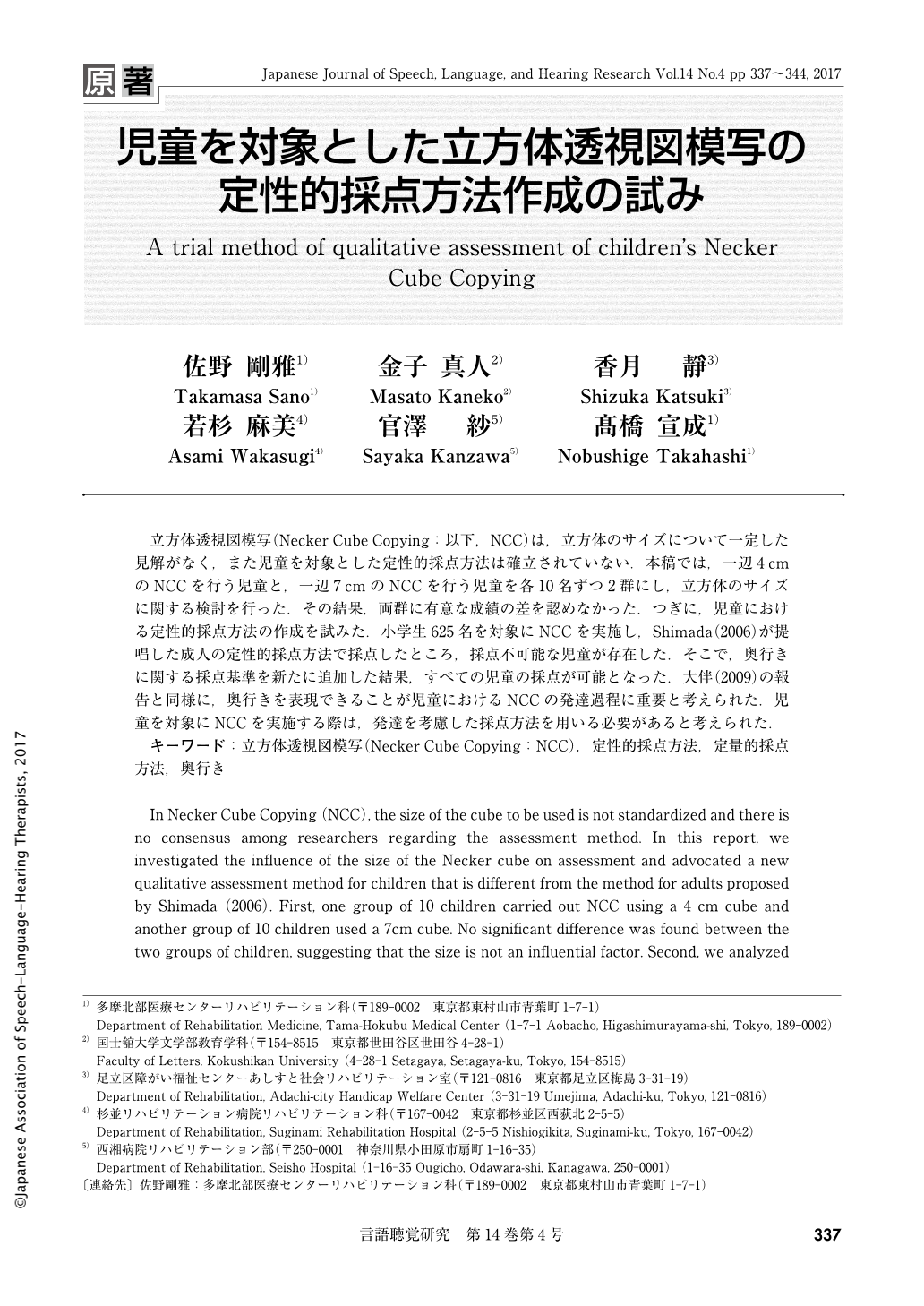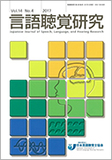Japanese
English
- 有料閲覧
- Abstract 文献概要
- 1ページ目 Look Inside
- 参考文献 Reference
- サイト内被引用 Cited by
立方体透視図模写(Necker Cube Copying:以下,NCC)は,立方体のサイズについて一定した見解がなく,また児童を対象とした定性的採点方法は確立されていない.本稿では,一辺4cmのNCCを行う児童と,一辺7cmのNCCを行う児童を各10名ずつ2群にし,立方体のサイズに関する検討を行った.その結果,両群に有意な成績の差を認めなかった.つぎに,児童における定性的採点方法の作成を試みた.小学生625名を対象にNCCを実施し,Shimada(2006)が提唱した成人の定性的採点方法で採点したところ,採点不可能な児童が存在した.そこで,奥行きに関する採点基準を新たに追加した結果,すべての児童の採点が可能となった.大伴(2009)の報告と同様に,奥行きを表現できることが児童におけるNCCの発達過程に重要と考えられた.児童を対象にNCCを実施する際は,発達を考慮した採点方法を用いる必要があると考えられた.
In Necker Cube Copying (NCC), the size of the cube to be used is not standardized and there is no consensus among researchers regarding the assessment method. In this report, we investigated the influence of the size of the Necker cube on assessment and advocated a new qualitative assessment method for children that is different from the method for adults proposed by Shimada (2006). First, one group of 10 children carried out NCC using a 4 cm cube and another group of 10 children used a 7cm cube. No significant difference was found between the two groups of children, suggesting that the size is not an influential factor. Second, we analyzed NCC performed by 625 primary school children and found that some drawings did not fit any of the categories for adults. Based on this result, we proposed a new qualitative assessment method for children adding a new category of "depth," and were able to classify all the 625 NCC drawings using the new method. Otomo (2009) also reported a similar finding; it is important that children become able to express "depth" in copying during the course of development. We maintain it is crucial to take cognitive development into consideration when assessing NCC for children.

Copyright © 2017, Japanese Association of Speech-Language-Hearing Therapists. All rights reserved.


